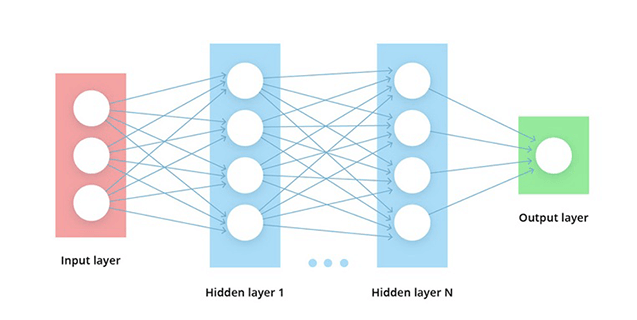Deep Learning
What is Deep Learning?
Deep Learning is a subset of machine learning concerned with large amounts of data with algorithms that have been inspired by the structure and function of the human brain, which is why deep learning models are often referred to as deep neural networks. It is is a part of a broader family of machine learning methods based on learning data representations, as opposed to traditional task-specific algorithms.
How Does Deep Learning Work?
In deep learning, a computer model learns to perform classification tasks directly from images, text, or sound. It performs a task repeatedly, making a little tweak to improve the outcome. Deep learning models can exceed human-level performance. Models are trained by using a large set of labeled data and neural network architectures that contain many layers. The most important part of a Deep Learning neural network is a layer of computational nodes called "neurons". Every neuron connects to all of the neurons in the underlying layer. Due to "deep learning" the neural network leverages at least two hidden layers. The addition of the hidden layers enables researchers to make more in-depth calculations. How does the algorithm work then? The thing is, each connection has its weight or importance.but, with the help of the deep neural networks we can automatically find out the most important features for classification. This is performed with the help of the Activation Function that evaluates the way the signal should take for every neuron, just like in the case of a human brain
Types of Deep Learning Layers:
- The input layer of nodes receives the information and transfers it to the underlying nodes;here the network fixates on patterns of local contrast as important.
- Hidden node layers are the ones where the computations appear, this is the layer that uses those patterns of local contrast to fixate on things that resemble
- In the output node layer, the results of the computations will show up. In this layer, the features will be applied to templates.

A deep neural network can create more and more complex features in each of the successive layers.
